 
|
|
Purgatorio, Canto XXIV ....e quella faccia, Di lÓ da lui pi¨ che l'altre trapunta Ebbe la Santa Chiesa in le sue braccia: Dal Torso fu, e purga per digiuno L'anguille di Bolsena e la vernaccia. | Purgatorio, Canto XXIV ... and that face Beyond him there, more peaked than the others, Has held the holy Church within his arms; From Tours was he, and purges by his fasting Bolsena's eels and the Vernaccia wine. |
The pope portrayed by Dante fasting in Purgatory because of his gluttony is Pope Martinus IV, elected in 1281 after a very turbulent conclave in Viterbo and forced to leave the town because of continuous unrest. He was unable to reach Rome, as the Romans had supported another candidate and he spent most of his pontificate in Orvieto, where according to Dante he banqueted too much.
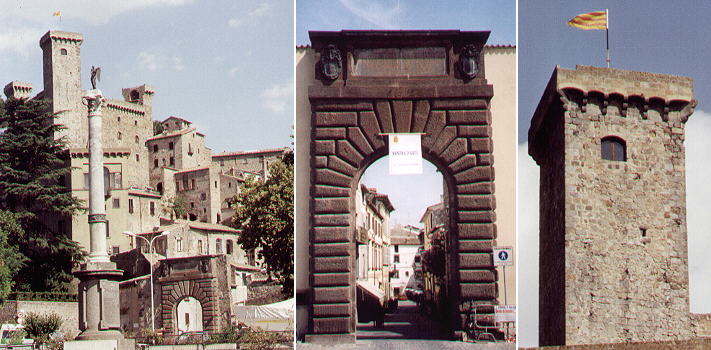 | ||
The imposing castle was built in the XIVth century, but it was rebuilt to a great extent in the XIXth century. Like other towns along Via Cassia, Bolsena has two gates: the southern one is usually
called Porta Viterbese or Porta Romana, while the northern one is called Porta Fiorentina.
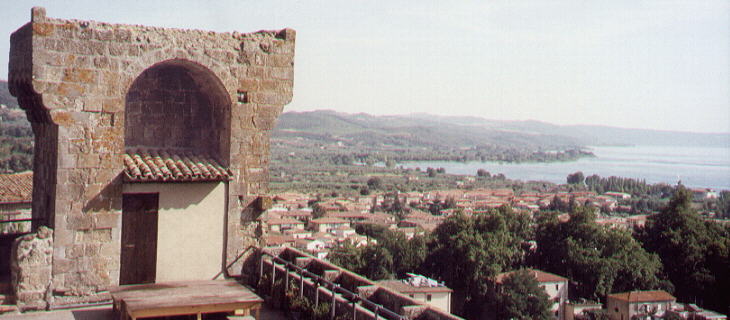 | ||
The castle offers fine views over the volcanic lake: the Farnese tried to include Bolsena in their possessions, but Bolsena remained faithful to the Church. You may see the towns on the other side of the lake by visiting a page on the Duchy of Castro.
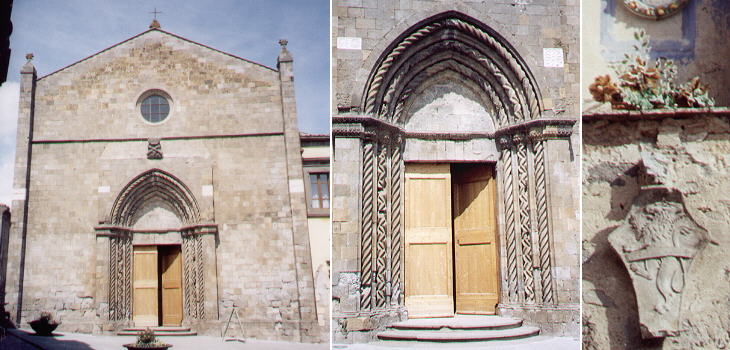 | ||
S. Francesco has a fine Gothic portal in a Romanic fašade. The historical part of Bolsena is reserved for pedestrians and it is a pleasure to walk in its medieval streets.
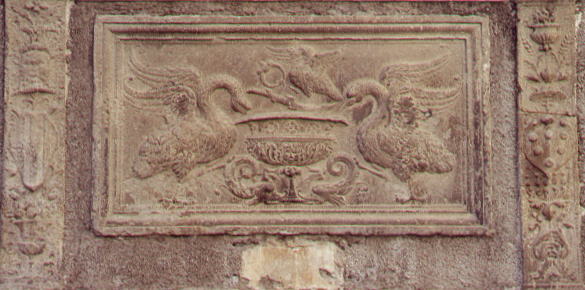 | ||
Giovanni de' Medici, son of Lorenzo il Magnifico, lord of Florence was appointed cardinal in 1489 at the age of 14. He was elected pope in 1513 with the name of Pope Leo X. While he was a cardinal, using the family wealth as leverage, he promoted the construction and the restoration of many churches (in Rome S. Maria in Domnica). His coat of arms appears on an elaborate relief in the main fountain of Bolsena.
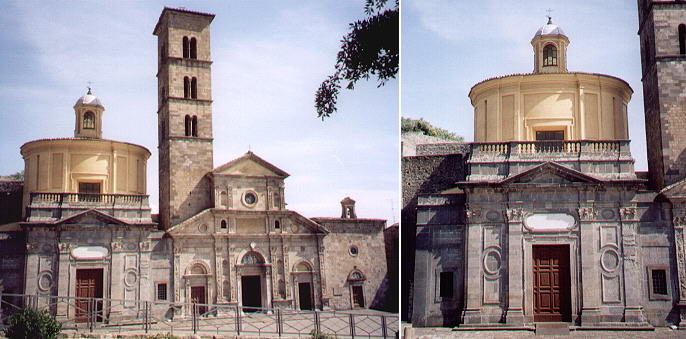 | ||
The Miracle of Bolsena occurred in 1263. A Bohemian priest, who was somewhat sceptical as to the doctrine of transubstantiation, was convinced of its truth by the miraculous appearance of drops of blood on the host he had just consecrated. In commemoration of this, Pope Urbanus IV instituted the festival of Corpus Christi and planned the erection of the Cathedral of nearby Orvieto.
In Bolsena the event is commemorated by a series of religious buildings shown above: the oratory where the miracle occurred is comprised in a large Baroque chapel erected in 1693 (Cappella del Miracolo).
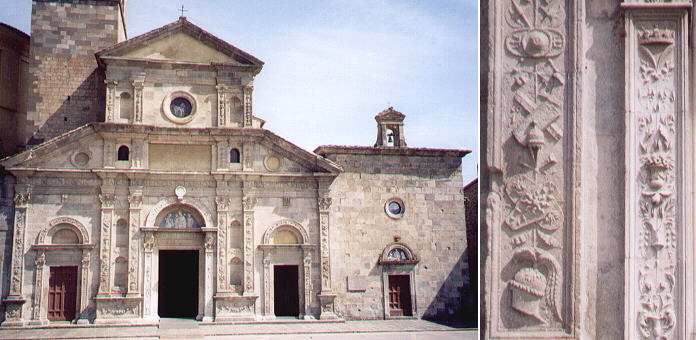 | ||
Collegiata di S. Cristina has an elegant fašade built in 1492-94 at the expense of Cardinal Giovanni de' Medici and its neat design shows a Florentine taste. The reliefs which embellish the fašade are inspired by paintings discovered in those years in Rome (see Abbazia di Grottaferrata for another example). The image used as a background for this page shows another detail of these reliefs.
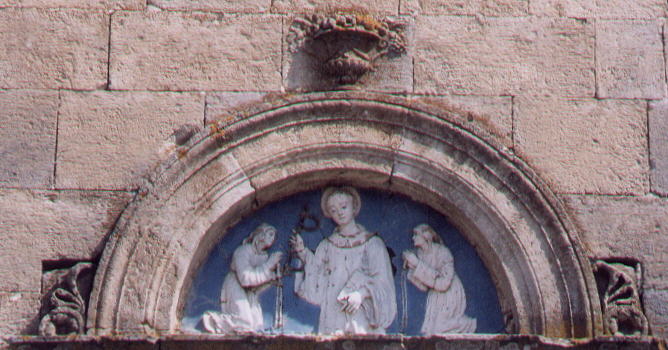 | ||
The Florentine taste shows up also in the painted terracottas adorning the lunettes of both Collegiata di S. Cristina and the adjoining church of S. Leonardo. You may see the terracotta of S. Cristina in my small glossary of art terms.
Move on to Montefiascone.
A Pilgrims' Way - Via Francigena - other pages:
Introduction - Acquapendente
Montefiascone
some other walks:
Walks with Ferdinand Gregorovius in the Roman countryside
In and about Viterbo
From Civitavecchia to Civita Castellana
Around Monte Cimino
In Maremma
Anticoli Corrado where the painters found their models
A walk to Porta Furba
Via Appia Antica from Cecilia Metella to Torre in Selci
Via Appia Antica from Torre in Selci to Frattocchie
A Walk to Ponte di Nona
Branching off Via Cassia: S. Maria di Galeria, Isola Farnese and Formello
A Walk to Malborghetto
See my Home Page on Baroque Rome or my Home Page on Rome in the footsteps of an XVIIIth century traveller
All images © 1999 - 2003 by Roberto Piperno. Write to romapip@quipo.it
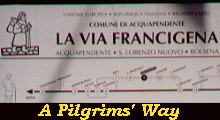 Via Francigena - Bolsena
Via Francigena - Bolsena